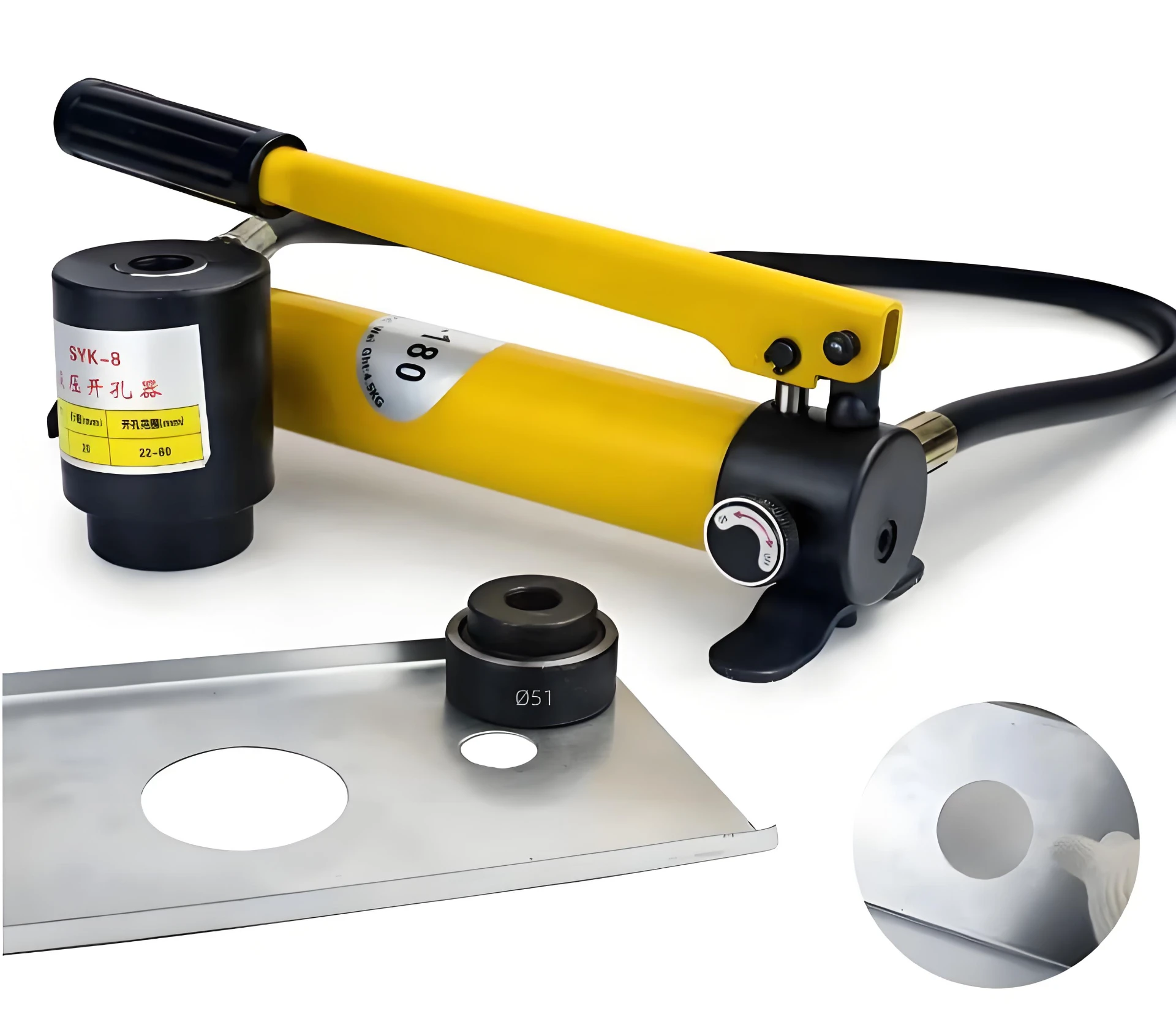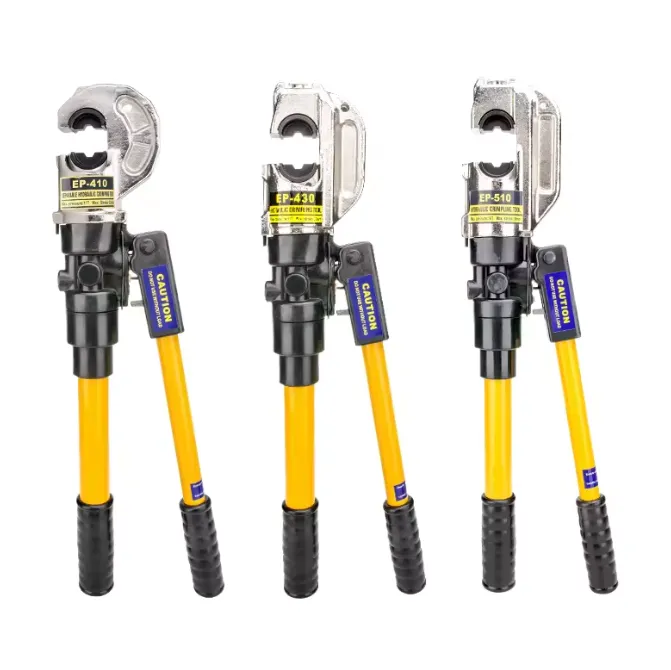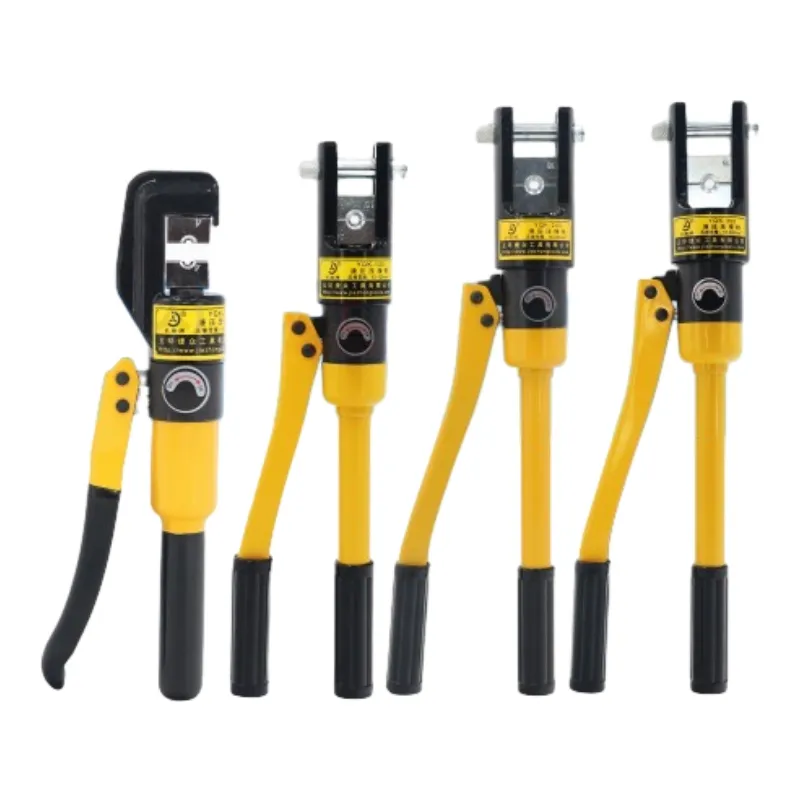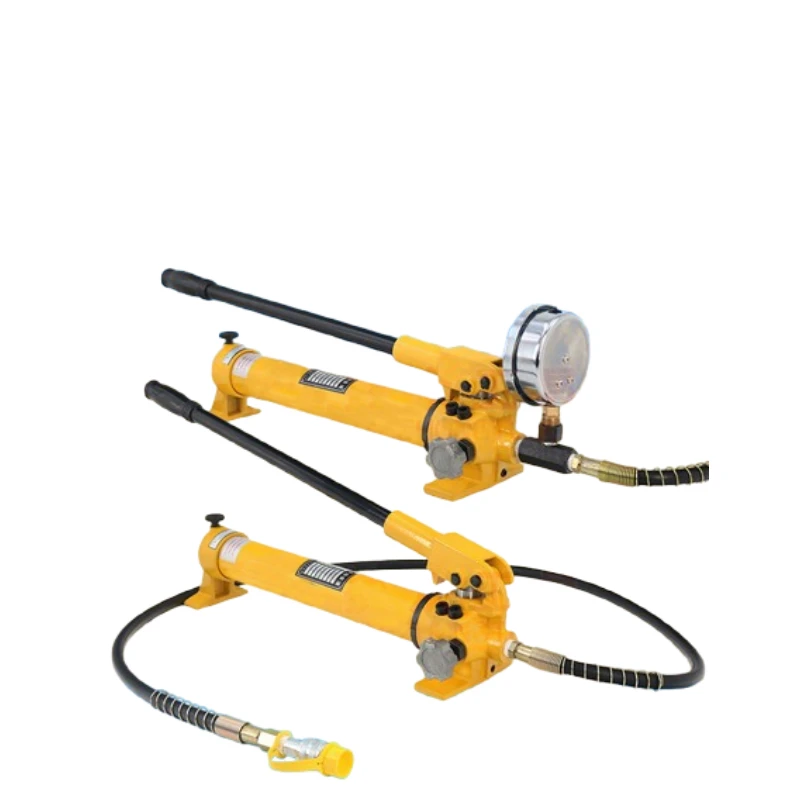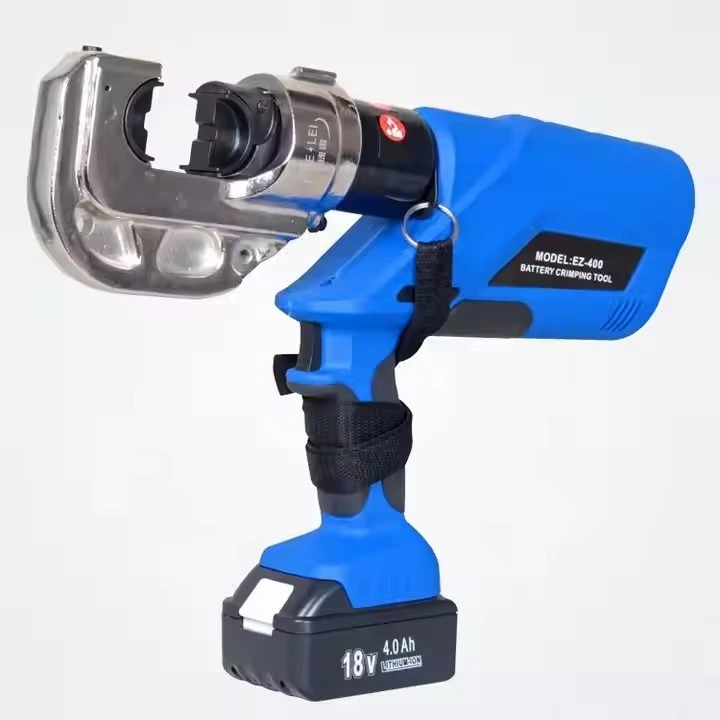Hydraulic Tools
Introducing Our Advanced Hydraulic Tools: Power Meets Precision
In the world of construction, automotive repair, and industrial applications, the right tools can make all the difference. Introducing our latest line of hydraulic tools, designed to deliver unparalleled power, precision, and efficiency for professionals and DIY enthusiasts alike. Whether you’re lifting heavy machinery, bending metal, or crimping cables, our hydraulic tools are engineered to meet the demands of any job with ease.
What Are Hydraulic Tools?
Hydraulic tools utilize the principles of hydraulics to amplify force and perform tasks that would be impossible with manual tools alone. By harnessing the power of pressurized fluid, these tools can lift, push, pull, or bend materials with remarkable strength and accuracy. Our hydraulic tools are built with high-quality materials and cutting-edge technology, ensuring they can withstand the rigors of daily use while providing consistent performance.
Key Features of Our Hydraulic Tools
1.Exceptional Strength and Durability: Our hydraulic tools are constructed from high-grade steel and reinforced components, making them robust enough to handle the toughest jobs. Whether you’re working in a workshop or on a construction site, you can trust that our tools will stand the test of time.
2. User-Friendly Design: Ergonomics is at the forefront of our design philosophy. Each tool is crafted to provide maximum comfort and control, reducing fatigue during extended use. Features such as non-slip grips and lightweight construction ensure that you can work efficiently without compromising on safety.
3. Versatile Applications: Our hydraulic tools are suitable for a wide range of applications, including automotive repair, metal fabrication, construction, and more. From hydraulic jacks and pumps to crimping tools and pipe benders, our product line is designed to meet the diverse needs of various industries.
4. Precision Engineering: Accuracy is crucial when it comes to hydraulic tools. Our products are engineered to deliver precise results, allowing you to complete tasks with confidence. Whether you’re lifting heavy loads or making intricate bends, our tools provide the control you need to achieve professional-grade results.
5. Safety Features: Safety is our top priority. Our hydraulic tools come equipped with built-in safety mechanisms to prevent overloading and ensure safe operation. Additionally, clear instructions and safety guidelines are provided with each tool, so you can work with peace of mind.
Why Choose Our Hydraulic Tools?
When it comes to hydraulic tools, quality matters. Our commitment to excellence means that you’re not just purchasing a tool; you’re investing in a reliable partner for your projects. We understand the challenges you face in your work, and our tools are designed to help you overcome them with ease. With rigorous testing and quality control processes, we ensure that every tool meets our high standards before it reaches your hands.
Customer Satisfaction Guaranteed
We take pride in our products and stand behind them with a satisfaction guarantee. Our dedicated customer service team is always ready to assist you with any questions or concerns, ensuring that you have the support you need throughout your experience with our hydraulic tools.
Elevate your work with our advanced hydraulic tools, where power meets precision. Whether you’re a seasoned professional or a weekend warrior, our tools are designed to help you tackle any challenge with confidence. Explore our extensive range of hydraulic tools today and experience the difference that quality and innovation can make in your projects. Don’t settle for less—choose our hydraulic tools and take your work to the next level!
What Is Not An Example Of A Commonly Used Hydraulic Tool?
Hydraulic tools are essential devices that utilize pressurized fluid to perform various tasks, ranging from lifting heavy loads to cutting through tough materials. These tools are widely used in construction, automotive repair, manufacturing, and many other industries due to their efficiency and power. However, with the vast array of tools available, it is important to distinguish between commonly used hydraulic tools and those that do not fit this category.
Common hydraulic tools include hydraulic jacks, hydraulic presses, hydraulic wrenches, and hydraulic cutters. Each of these tools serves a specific purpose and is designed to handle tasks that require significant force. For instance, hydraulic jacks are often used to lift vehicles for maintenance or repair, while hydraulic presses are employed to shape or mold materials under high pressure. Hydraulic wrenches are invaluable in tightening or loosening bolts, especially in heavy machinery, and hydraulic cutters are used to slice through metal and other tough materials with ease.
However, not all tools that may seem hydraulic in nature are commonly used in practice. For example, a hydraulic hammer is often confused with hydraulic tools, but it is not a commonly used hydraulic tool in the same sense as those mentioned above. While hydraulic hammers do exist and are used in specific applications, they are not as universally recognized or utilized as hydraulic jacks or presses.
Another example of a tool that is not a commonly used hydraulic tool is a hydraulic lift table. While hydraulic lift tables are indeed hydraulic devices, they are more specialized and not as widely used across various industries compared to other hydraulic tools. They are primarily found in warehouses and manufacturing settings for lifting and lowering heavy items, but they do not have the same level of versatility as hydraulic jacks or presses.
Additionally, tools like hydraulic torque wrenches, while important in certain sectors, may not be considered "common" in the broader context of hydraulic tools. These wrenches are specifically designed for applications requiring precise torque settings, such as in the assembly of large machinery or in the oil and gas industry. Their specialized nature means they are not as frequently encountered in everyday tasks compared to more general hydraulic tools.
Moreover, tools such as hydraulic crimpers, which are used to join two pieces of metal together by deforming one or both of them, are also not as commonly recognized as hydraulic jacks or presses. While they play a crucial role in specific applications, their use is limited to particular industries, making them less common in the general landscape of hydraulic tools.
While hydraulic tools are indispensable in many fields, it is essential to recognize that not all hydraulic devices are commonly used. Tools like hydraulic hammers, hydraulic lift tables, hydraulic torque wrenches, and hydraulic crimpers, while valuable in their own right, do not have the same level of widespread application as hydraulic jacks, presses, and wrenches. Understanding these distinctions helps professionals choose the right tools for their specific needs and ensures that they are equipped with the most effective equipment for their tasks.
What Is Hydraulic Vs Pneumatic Tools?
Hydraulic tools are essential devices that utilize the principles of hydraulics to perform various tasks, particularly in construction, automotive repair, and industrial applications. These tools operate by using pressurized fluid to generate force, allowing them to perform heavy-duty tasks with precision and efficiency. In this article, we will explore what hydraulic tools are, their applications, and provide an example of a commonly used hydraulic tool.
Understanding Hydraulic Tools
At their core, hydraulic tools function based on Pascal's principle, which states that pressure applied to a confined fluid is transmitted undiminished throughout the fluid. This principle allows hydraulic tools to amplify force, making them incredibly effective for lifting, cutting, bending, and shaping materials. The main components of hydraulic tools include a hydraulic pump, hydraulic fluid, and various attachments or implements designed for specific tasks.
Hydraulic tools are favored in many industries due to their ability to generate significant force with minimal manual effort. They are often more compact and lighter than their mechanical counterparts, making them easier to handle and maneuver in tight spaces. Additionally, hydraulic tools can be powered by electricity, batteries, or manual pumps, providing versatility in their use.
Common Applications of Hydraulic Tools
Hydraulic tools are widely used across various sectors, including construction, automotive, manufacturing, and maintenance. Some common applications include:
1.Lifting and Hoisting: Hydraulic jacks and lifts are used to raise heavy loads, such as vehicles or construction materials, with ease.
2. Cutting and Shearing: Hydraulic cutters and shears are employed to cut through metal, concrete, and other tough materials.
3. Bending and Forming: Hydraulic presses are used to bend and shape materials, making them essential in metalworking and fabrication.
4. Crimping and Punching: Hydraulic crimpers and punches are utilized in electrical work and metalworking to create secure connections and holes.
A Commonly Used Hydraulic Tool: The Hydraulic Jack
One of the most commonly used hydraulic tools is the hydraulic jack. Hydraulic jacks are devices designed to lift heavy objects by applying a small force to a hydraulic fluid, which then amplifies that force to raise the load. They are widely used in automotive repair shops, construction sites, and even in home garages.
Hydraulic jacks come in various types, including floor jacks, bottle jacks, and scissor jacks. Each type has its specific design and application, but they all operate on the same fundamental principle of hydraulics.
- Floor Jacks: These are commonly used in automotive applications to lift vehicles for tire changes or repairs. They have a low profile and can easily slide under cars, providing stability and safety while lifting.
- Bottle Jacks: These are compact and portable, making them ideal for lifting heavy loads in tight spaces. They are often used in construction and industrial settings.
Scissor Jacks: Typically found in vehicles as part of the spare tire kit, scissor jacks are lightweight and easy to use, allowing drivers to change tires quickly.
Hydraulic tools play a crucial role in modern industry and everyday tasks, providing efficiency and power that manual tools cannot match. Among these tools, the hydraulic jack stands out as a commonly used example, demonstrating the effectiveness of hydraulic technology in lifting and supporting heavy loads. As technology continues to advance, the applications and capabilities of hydraulic tools will likely expand, further enhancing their importance in various fields. Whether in a professional setting or for personal use, understanding hydraulic tools and their functions can significantly improve productivity and safety in numerous tasks.



















































































































